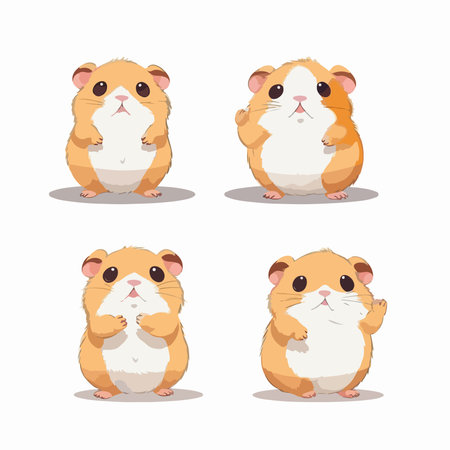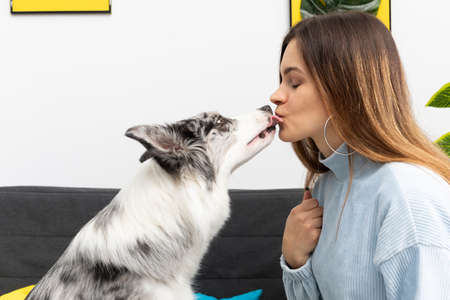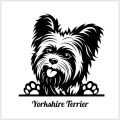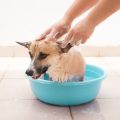1. Understanding Obesity in Small Pets
Obesity isn’t just a concern for dogs and cats—it’s a growing problem among America’s small pets like hamsters, guinea pigs, rabbits, and ferrets. Many pet parents may not notice the extra ounces at first, but even a slight increase in weight can have a big impact on these tiny companions. Let’s take a closer look at how obesity shows up in different small pets and why it’s an issue worth paying attention to.
How Does Obesity Show Up in Small Pets?
| Pet Type | Signs of Obesity |
|---|---|
| Hamster | Difficulty running on wheels, bulging sides, slow movement |
| Guinea Pig | Fat pads behind shoulders, trouble grooming, reluctance to move |
| Rabbit | Poor muscle tone, folds of fat around neck, decreased activity |
| Ferret | Round belly, less playful behavior, hard time squeezing through tunnels |
Why Is Obesity a Growing Issue?
In the U.S., our love for spoiling pets sometimes leads to overfeeding or picking treats high in sugar and fat. Combine that with less space for exercise (especially for indoor pets) and you’ve got a recipe for unwanted weight gain. Overweight small pets are more likely to face health problems such as diabetes, heart disease, joint pain, and even shorter lifespans. For American families who consider their pets part of the family, preventing obesity is all about keeping those little friends healthy and happy for years to come.
2. Common Causes of Weight Gain
When it comes to small pets like rabbits, guinea pigs, hamsters, and ferrets, weight gain can sneak up quickly. Let’s take a closer look at the main reasons behind obesity in these little companions.
Overfeeding: When a Little Extra Adds Up
Many pet owners show love by offering extra food or treats, but small pets don’t need as many calories as we might think. Even a few extra pellets or seeds each day can make a big difference over time.
| Pet Type | Ideal Daily Food Amount | Common Overfeeding Mistakes |
|---|---|---|
| Rabbit | 1/4 cup pellets + unlimited hay + 1 cup veggies per 5 lbs body weight | Too many pellets or sugary fruits |
| Guinea Pig | 1/8 cup pellets + unlimited hay + 1 cup veggies | Extra snacks or “treat” mixes |
| Hamster | 1 tablespoon food mix | Frequent high-fat seeds or nuts |
| Ferret | ¼ to ½ cup high-protein kibble | Treats with sugar or grains |
Low Activity Levels: Couch Potato Critters
Like people, small pets need regular movement to burn off energy. Without enough playtime or space to explore, their bodies can store extra calories as fat. For example, a hamster in a small cage without a wheel will become less active and more prone to gaining weight.
How to Encourage Activity:
- Add tunnels, wheels, and toys for exploring and climbing.
- Create safe play areas outside the cage for supervised exercise.
- Rotate toys regularly to keep things interesting.
Improper Diets: Not All Pet Foods Are Equal
The wrong kind of food can set the stage for weight gain. Many commercial mixes are packed with seeds, nuts, or fillers that are high in calories but low in nutrients. Small pets thrive on diets tailored to their species — for instance, rabbits and guinea pigs need mostly hay and fresh veggies, not pellets alone.
A Quick Look at Healthy Diet Basics:
| Species | Main Food Source | Avoid These Foods |
|---|---|---|
| Rabbit/Guinea Pig | Hay & Leafy Greens | Bread, cereal, chips, sweets |
| Hamster/Gerbil | Diverse seed/grain mix (in moderation) | Too many sunflower seeds, processed foods |
| Ferret | High-protein meat-based kibble | Sugary treats, fruits, dairy products |
Treat Culture in America: Spoiling with Snacks
The American habit of using treats as rewards extends to our pets — sometimes too often! While an occasional snack is okay, making treats a daily habit can quickly lead to overweight pets. Remember: what looks like a tiny piece of cheese or fruit to us is actually a big calorie boost for your small pet.
Treat Tips:
- Use healthy treats (like veggies) instead of processed snacks.
- Limit treats to special occasions or training sessions only.
- Avoid sharing human foods that are high in sugar or fat.
If you keep these common causes in mind and adjust how you care for your pet, you’ll be taking an important step toward helping them stay happy and healthy!

3. Recognizing the Signs of Obesity
Why Spotting Obesity Early Matters
Obesity in small pets, like guinea pigs, rabbits, hamsters, and rats, is more common than many pet owners realize. Catching the signs early can make a huge difference for your pet’s health and happiness. In American households, we love to treat our pets like family, but sometimes all those extra treats add up! That’s why it’s important to know what to look for so you can take action before things get out of hand.
Physical Signs: What Does an Overweight Pet Look Like?
Small pets often hide their weight gain under fluffy fur or feathers. Here are some physical changes to watch for:
| Body Part | Healthy Appearance | Signs of Obesity |
|---|---|---|
| Waistline | Slightly visible from above | No waist; round or oval body shape |
| Ribs & Spine | Easily felt but not seen | Difficult to feel under fat layers |
| Neck & Face | Defined neck, alert face | Fat rolls around neck or chin (a “double chin” look) |
| Movement | Bouncy, agile movement | Slow movement; reluctance to play or climb |
Behavioral Changes: How Do Pets Act When They’re Overweight?
Your pet’s behavior is another big clue. Obese small pets may show:
- Lack of interest in toys or exercise wheels
- Trouble grooming themselves—fur may look greasy or matted
- Panting after minor activity (especially in rabbits and guinea pigs)
- Spending more time sleeping or hiding instead of exploring
- Difficulty getting in and out of hideouts or climbing ramps in their habitat
When Should You Be Concerned?
If you notice your pet gaining weight rapidly, losing interest in activities, or struggling with movement and grooming, it’s time to take action. Don’t wait—early intervention means easier management and a happier, healthier pet!
4. Health Risks Associated with Obesity
Obesity in small pets is more than just a weight issue—it can seriously affect their overall health and happiness. Just like in people, carrying extra pounds puts a lot of strain on your pet’s body and can lead to a range of medical problems. Let’s take a closer look at the main health risks that come with obesity in small pets.
Major Health Problems Linked to Obesity
| Health Risk | Description | Common Signs |
|---|---|---|
| Diabetes | Obese pets are at higher risk for developing diabetes, especially small mammals like guinea pigs and rabbits. Their bodies can have trouble managing blood sugar levels. | Increased thirst, frequent urination, lethargy |
| Heart Disease | Extra weight makes the heart work harder, which can lead to high blood pressure and heart problems over time. | Coughing, difficulty breathing, fatigue |
| Joint & Mobility Issues | Added weight puts stress on joints and bones, leading to arthritis or difficulty moving around—especially in older pets or breeds prone to joint problems. | Limping, reluctance to move, less playful behavior |
| Shortened Lifespan | Obesity can reduce your pet’s life expectancy by causing long-term damage to organs and making them more vulnerable to other diseases. | Aging signs appear sooner; increased vet visits needed |
The Impact on Daily Life and Well-being
It’s not just about serious medical issues—being overweight can make it tough for your pet to do everyday things. Small pets may struggle to groom themselves, play, or even breathe comfortably. They might seem tired all the time or lose interest in activities they once loved. All these changes can impact their quality of life and your bond with them.
Spotting Early Signs Matters
If you notice your small pet gaining weight, moving less, or showing any of the signs listed above, it’s important to talk with your veterinarian. Early intervention can help prevent these health risks from becoming severe and give your furry friend a better chance at a long, happy life.
5. Prevention Strategies for Pet Owners
Practical Tips to Keep Your Small Pets Healthy
Obesity in small pets, like rabbits, guinea pigs, hamsters, and even ferrets, is becoming more common across the United States. Luckily, there are everyday strategies you can use to help your furry friends stay fit and happy. Here are some easy-to-follow prevention tips tailored for American pet owners.
Portion Control: The Foundation of Healthy Eating
Overfeeding is one of the most frequent causes of obesity in small pets. Make sure you know how much food your pet actually needs each day. Avoid free-feeding (leaving unlimited food out all day) and stick to regular meal times. Use a measuring scoop or digital scale for accuracy.
| Pet Type | Recommended Daily Food Portion | Common Mistake |
|---|---|---|
| Rabbit | 1/4 cup pellets + unlimited hay + 1-2 cups leafy greens | Too many pellets or treats |
| Guinea Pig | 1/8 cup pellets + unlimited hay + 1 cup veggies | Extra fruit snacks |
| Hamster | 1 tablespoon commercial mix + fresh veggies | Refilling bowl before empty |
| Ferret | 1/4 – 1/2 cup high-protein kibble per day | Treats high in sugar or carbs |
Healthy Snack Alternatives
Treats are fun, but too many can pack on the pounds. Choose low-calorie, nutritious snacks instead of sugary or fatty ones. Here are some safe options:
- Slices of carrot or cucumber (for rabbits and guinea pigs)
- A few blueberries or apple bits (in moderation)
- Small pieces of cooked chicken or egg (for ferrets)
- Pumpkin seeds (for hamsters, unsalted and limited)
Avoid giving processed human foods or treats marketed as “junk food” for pets. Always introduce new foods slowly and watch for any digestive issues.
Engaging Forms of Exercise That Fit American Lifestyles
Your pet’s environment should encourage movement and play. Even if you live in an apartment or have a busy schedule, you can keep your pet active:
- Playpens & Tunnels: Set up a safe play area with tunnels, boxes, or chew toys.
- Interactive Toys: Puzzle feeders or treat balls encourage natural foraging behavior.
- Cage Rotations: Rearranging cage toys and structures keeps things interesting.
- Supervised Floor Time: Let your pet explore a pet-proofed room daily.
- D.I.Y Agility Courses: Use household items to create mini obstacle courses for extra fun.
If youre short on time, break activities into short sessions throughout the day—just five minutes here and there makes a difference! Remember that regular exercise not only helps control weight but also reduces stress and boredom in small pets.
6. Solutions and Treatment Options
Helping your small pet overcome obesity isn’t just about cutting back on treats—it’s about making thoughtful, veterinarian-backed changes to their daily routine. Here’s how you can help your furry friend get back to a healthy weight, along with resources that offer ongoing support.
Vet-Approved Steps for Safe Weight Loss
When it comes to treating obesity in small pets like rabbits, guinea pigs, hamsters, or rats, a visit to your local vet is the best starting point. Here’s what a typical plan might look like:
| Step | Description |
|---|---|
| Veterinary Assessment | Your vet will check your pet’s overall health, determine their ideal weight, and rule out medical causes for weight gain. |
| Diet Modification | The vet may suggest reducing high-calorie foods (like seeds or treats) and increasing fiber-rich options such as hay and fresh veggies. |
| Portion Control | Carefully measured meals prevent overfeeding. Use a kitchen scale or special feeding cups for accuracy. |
| Exercise Plan | Encourage safe activities: tunnels, exercise wheels (for rodents), or playtime outside the cage under supervision. |
| Regular Weigh-Ins | Weekly check-ins help track progress. Make weighing fun with treats or gentle handling! |
Behavioral Changes at Home
- Create Enrichment: Add toys, climbing structures, and puzzle feeders to keep your pet active and mentally stimulated.
- Limit Treats: Swap calorie-dense snacks for veggie nibbles or hay-based chews.
- Family Involvement: Make sure everyone in the household follows the new feeding guidelines.
Common Diet Adjustments by Pet Type
| Pet Type | Main Diet Focus | Treat Suggestions |
|---|---|---|
| Rabbits/Guinea Pigs | Unlimited hay, limited pellets, daily leafy greens | Tiny pieces of carrot or apple (occasional) |
| Hamsters/Rats/Mice | Mainly lab blocks/pellets with some fresh produce; avoid fatty seeds/nuts as staples | Cucumber slices, broccoli bits (sparingly) |
Community Resources for Support
- Your Local Vet Clinic: Many offer weight management programs or group classes for small pet owners.
- Online Forums: Websites like Reddits r/rabbits or r/guineapigs provide advice and encouragement from fellow pet parents.
- Anipal Groups: Check Facebook or Meetup for local small pet groups—these can be great for shared experiences and tips.
- Shelters & Rescues: Some organizations offer educational workshops or nutrition counseling for adopters.
Remember:
Losing weight takes time and patience—always make changes gradually to avoid stressing your pet. With veterinarian guidance and a little community support, your small companion can be happy, healthy, and active again!
7. Building Healthy Habits for Life
Helping your small pet avoid obesity is all about creating a lifestyle that supports their long-term wellness. Just like people, pets thrive on routines that blend love, fun, and health. Here’s how you can help your furry friend build healthy habits for life.
Find the Right Balance: Affection, Activity, and Health
Your pet needs more than just food and shelter—they also need your attention, mental challenges, and regular exercise. Let’s break down what a balanced daily routine might look like:
| Habit | How to Do It | Why It Matters |
|---|---|---|
| Interactive Playtime | Use toys, tunnels, or wheels for 20-30 minutes daily | Keeps them active and prevents boredom eating |
| Healthy Feeding Schedule | Feed at set times with measured portions | Avoids overeating and helps track food intake |
| Enrichment Activities | Hide treats, rotate cage accessories weekly | Stimulates mind and keeps them moving |
| Cuddle Sessions | Gentle petting or holding daily (if your pet enjoys it) | Builds trust without using treats as rewards |
| Regular Check-ins | Weigh your pet monthly; watch for changes in shape or energy levels | Catches weight gain early so you can adjust habits fast |
Create a Sustainable Routine That Works for You Both
No two pets are exactly alike—some love zooming around, others prefer quiet snuggle time. The key is to match activities to your pet’s personality while still encouraging movement and engagement. Try different games or enrichment tools until you find what gets your pet excited each day.
Tips for Sticking With It:
- Set reminders: Use phone alarms or calendar notes for play and feeding times.
- Get the family involved: Share responsibilities so everyone bonds with your pet.
- Make changes gradually: If your pet isn’t used to a lot of activity, start slow and increase over time.
- Praise often: Use gentle words and affection instead of extra treats when they’re active or curious.
The Big Picture: Wellness Every Day
The best way to keep your small pet healthy is to make sure every day includes a mix of love, movement, and mental fun. When healthy choices become part of your normal routine, preventing obesity feels easy—and both you and your furry friend will enjoy a happier life together.


